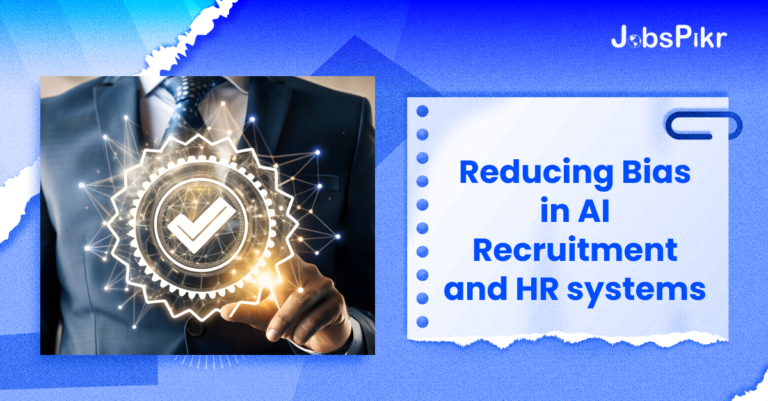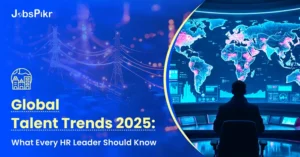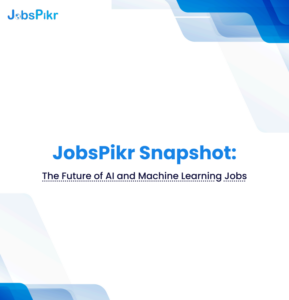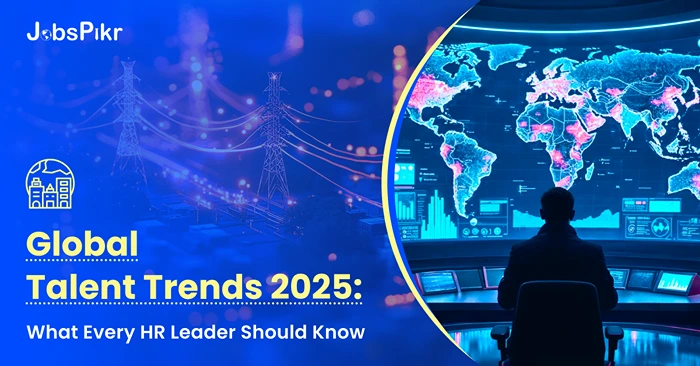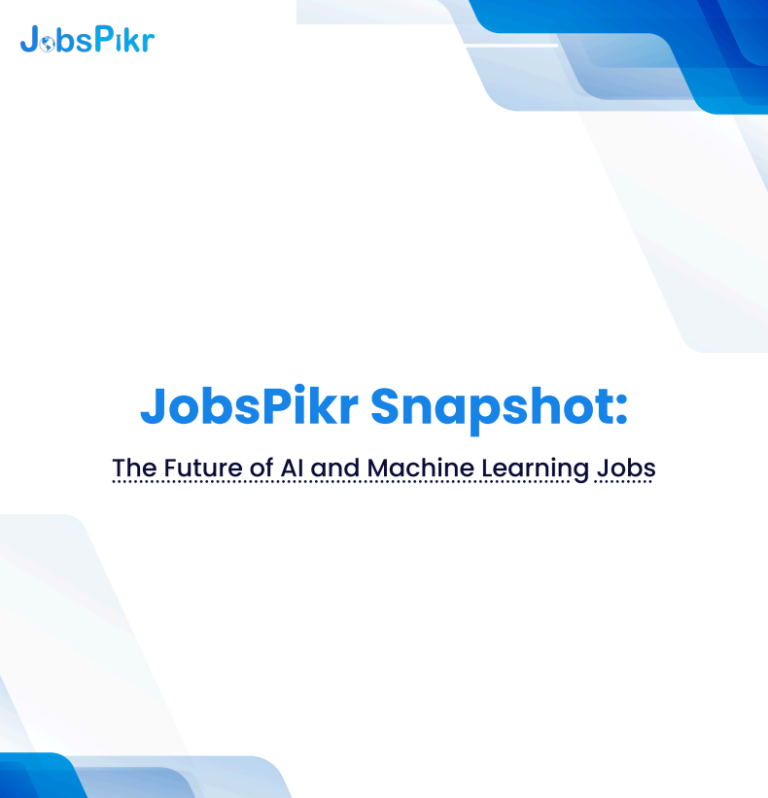Artificial intelligence (AI) has rapidly transformed recruitment and human resource (HR) practices. With AI recruitment systems becoming the norm, organizations are harnessing these tools to streamline hiring processes, reduce costs, and analyze candidate pools more effectively. However, one significant concern is the potential for bias in AI recruitment systems, which can perpetuate or even amplify existing biases. This detailed report, targeting corporate HR departments, provides a comprehensive exploration of the key challenges, strategies, and best practices for reducing bias in ai recruitment and HR systems.
How is AI Transforming the Recruitment Landscape?
AI recruitment tools have revolutionized how organizations source, screen, and select candidates. AI technologies are used for various functions such as resume parsing, candidate matching, job description optimization, and even conducting AI-driven interviews. A McKinsey report noted that AI-based recruitment tools can reduce time-to-hire by up to 50%, enhance candidate quality by up to 35%, and cut recruiting costs by 20-30%.
However, while these benefits make AI systems attractive to HR departments, they also raise questions about fairness and inclusivity. Several high-profile cases, such as the Amazon hiring algorithm that disproportionately favored male candidates, demonstrate that AI systems can replicate human biases if not designed and managed properly.
What Are the Different Types of Bias in AI Recruitment Systems?
To fully understand how bias occurs in AI recruitment, it’s essential to break down the types of bias that can emerge:
- Training Data Bias:
AI algorithms rely on historical data to make predictions and decisions. If the data used to train these systems reflects biased human decisions—favoring a particular gender, race, or age group—the algorithm will perpetuate those biases. A 2022 study found that 61% of AI recruitment tools trained on biased data replicated discriminatory hiring patterns.
- Algorithmic Bias:
The way algorithms are designed can introduce unintended biases. For instance, an algorithm trained to identify high-performing employees based on past successes may inadvertently favor traits that are more common in one demographic group. This was seen in systems that favored male candidates with specific educational backgrounds, sidelining equally capable women and minorities.
- Input Bias:
Bias can also stem from the way data is input into the system. If certain keywords or language patterns are weighted more favorably, candidates from underrepresented groups may be unfairly penalized.
How Can Companies Overcome Key Challenges in Reducing Bias?
While AI recruitment systems offer enormous potential, several challenges complicate the reduction of bias:
- Lack of Diverse Training Data: Most AI recruitment systems are trained on historical company data, which often reflects existing workforce demographics. A lack of representation in training data can lead to biased predictions, limiting opportunities for underrepresented groups. For example, a 2023 survey found that only 17% of training data sets used in recruitment were demographically diverse.
- Transparency and Explainability: AI algorithms often operate as “black boxes,” where even their developers may not fully understand how decisions are made. This lack of transparency makes it difficult to identify and rectify biases. The Harvard-led Hire Aspirations Institute recently emphasized that opaque AI systems exacerbate biases because users cannot effectively scrutinize or correct them.
- Human-AI Interaction: Human recruiters often rely too heavily on AI recommendations without scrutinizing the results. A study by the World Economic Forum found that in 85% of AI-driven hiring decisions, recruiters followed AI recommendations without questioning their fairness or accuracy.
Common Sources of Bias Found in AI Systems
| Bias Type | Percentage of Occurrence |
| Training Data Bias | 61% |
| Algorithmic Bias | 25% |
| Input Bias | 14% |
Proven Strategies for Reducing Bias in AI Recruitment
To address these challenges, organizations must adopt robust strategies aimed at minimizing bias in AI recruitment systems. Reduction in bias by implementing AI audits and Human oversight.
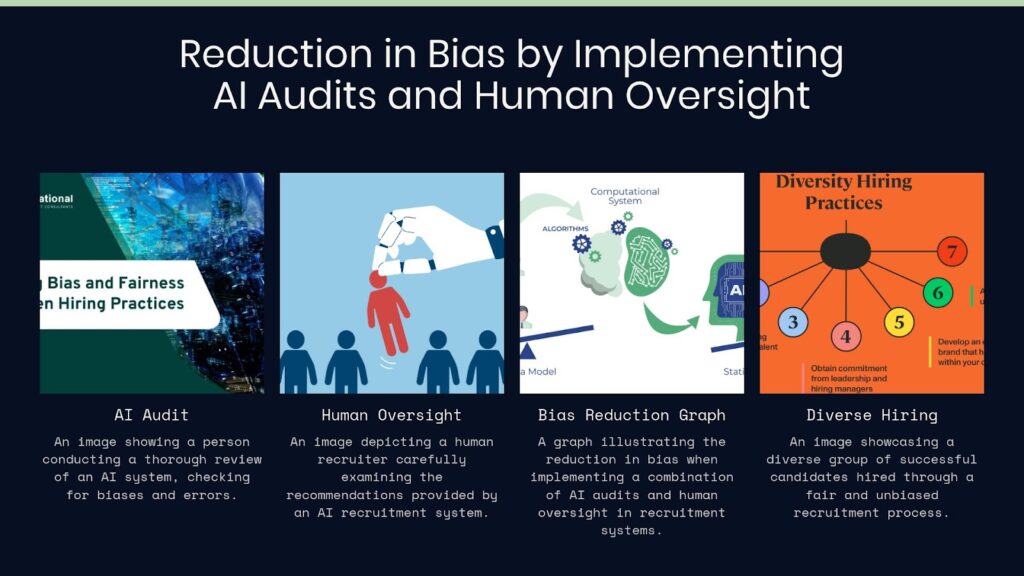
- Utilizing Diverse Data Sets for Training:
One of the most effective ways to reduce bias is by training AI algorithms on diverse and representative data sets. This includes incorporating data from various demographic groups to ensure that AI tools do not favor a specific population. Regular audits and updates of training data are crucial to prevent historical biases from being perpetuated. In fact, IBM’s AI Fairness 360 toolkit is designed to help developers detect and mitigate bias in training data.
- Bias Audits and Algorithm Testing:
Conducting regular bias audits is essential for identifying disparities in AI decision-making. Organizations should test their AI systems to see how they perform across different demographic groups. Bias audits should be mandatory, especially for companies working with high-risk AI systems. For instance, New York City’s 2023 law requires companies to conduct bias audits on AI hiring tools before they can be used.
- Building Transparent AI Models:
AI systems should be designed with transparency in mind. Employers and HR professionals need to understand how AI algorithms make decisions. This includes being able to explain why certain candidates were selected or rejected. Some organizations have started working with explainable AI (XAI) models that allow for more insight into the decision-making process.
- Human Oversight in Decision-Making:
AI should not be the sole decision-maker in recruitment. Instead, AI tools should augment human decision-making, where final hiring decisions are made by recruiters who are aware of the potential biases in AI-generated recommendations. According to a study by Lewis Silkin, organizations that employed human oversight along with AI experienced a 45% reduction in biased decisions compared to those that relied solely on AI.
- Blind Recruitment Techniques:
To further reduce bias, companies can implement blind recruitment strategies that anonymize candidate details such as names, gender, and race. This prevents AI systems from making decisions based on irrelevant demographic information. A report by Glider.ai demonstrated that companies using blind recruitment techniques saw a 32% increase in hiring diversity.
Best Practices for Implementing Fair AI Recruitment Systems
In addition to the strategies outlined above, organizations should follow several best practices to create fair and unbiased AI recruitment systems. We have noticed the reduction in bias by implementing AI audits and human oversight.
- Continuous Monitoring and Auditing:
AI systems must be continuously monitored for biases that may emerge over time. Regular audits should be conducted to ensure compliance with legal and ethical standards. As highlighted by the European Union’s GDPR and AI regulation frameworks, regular assessments of AI systems are critical to protecting candidates’ rights.
- Building Ethical AI Frameworks:
Organizations should adhere to ethical AI principles such as fairness, accountability, and transparency. The FAT/ML (Fairness, Accountability, and Transparency in Machine Learning) framework provides a set of guiding principles for designing and implementing AI systems that uphold fairness. Companies like Google and Microsoft have already adopted similar guidelines to ensure their AI systems align with ethical standards.
- Creating a Diverse Development Team:
A key to reducing bias in AI systems is ensuring diversity within the teams that design and implement these tools. Diverse teams are more likely to recognize and address biases that may be missed by homogenous groups.
- Engaging with External Auditors:
Hiring external auditors to review AI systems for bias can provide an objective assessment of their fairness. Several organizations, including the Algorithmic Justice League, offer services to audit AI systems and provide recommendations for reducing bias.
| Practice | Impact on Bias Reduction |
| Continuous Monitoring | 30% reduction in bias |
| Ethical AI Frameworks | 25% improvement in fairness |
| Diverse Development Teams | 20% increase in diverse hiring |
| External Auditors | 15% improvement in system accuracy |
What Does the Future Hold for AI in Recruitment?
As AI technologies continue to evolve, the future of recruitment will likely see even more sophisticated tools for identifying top talent. However, with advancements come new challenges in ensuring that AI systems remain fair, inclusive, and transparent. Several trends are emerging in the AI recruitment space:
- Explainable AI (XAI):
The development of XAI models, which allow recruiters to understand how AI tools make decisions, is a promising direction. These systems are designed to provide insights into the criteria used by AI algorithms, helping HR professionals identify and address any biases more effectively.
- Legal Frameworks for AI:
As more countries and regions introduce legal frameworks to regulate AI in recruitment, organizations will need to stay updated on compliance requirements. For example, the European Union’s proposed AI Act classifies AI systems based on risk and imposes stricter regulations on high-risk systems such as those used in recruitment.
- AI for Diversity and Inclusion:
Future AI systems will increasingly focus on promoting diversity and inclusion in hiring practices. AI-powered tools like Pymetrics and Humantic AI already offer assessments that focus on soft skills, cultural fit, and fairness, promoting a more holistic view of candidates beyond traditional qualifications.
Conclusion
In conclusion, AI recruitment systems hold transformative potential for enhancing hiring processes, but they also introduce significant risks regarding bias. To minimize these risks, HR departments must prioritize strategies such as using diverse training data, conducting regular bias audits, and ensuring human oversight. Tools like explainable AI and blind recruitment can further promote fairness and transparency, ultimately leading to more inclusive and equitable hiring practices.
However, the journey to implementing fair AI recruitment systems requires continuous monitoring, frequent reassessment of algorithms, and adherence to legal and ethical standards. By adopting these practices, organizations can harness the power of AI to create a more diverse and capable workforce while mitigating the risks of bias.
How JobsPikr Can Help you?
JobsPikr, a leading provider of job market intelligence, offers a suite of tools that can help organizations make data-driven, unbiased hiring decisions. With its AI-powered job market data and analytics, JobsPikr enables companies to access real-time labor market insights, track job trends, and benchmark hiring practices across industries. By leveraging diverse and expansive datasets, organizations can train their AI recruitment tools more effectively, reducing bias in their hiring process.
JobsPikr’s solutions allow companies to stay ahead of the competition while ensuring fairness and inclusivity in their recruitment strategies. The platform’s deep labor market intelligence also supports organizations in complying with regulatory standards and promoting diversity in the workplace. By partnering with JobsPikr, businesses can ensure that their AI-driven recruitment efforts are not only efficient but also fair and transparent. Sign-up now!
Appendix: Glossary of Terms
- AI Recruitment: The application of artificial intelligence technologies to automate various stages of the recruitment process.
- Bias in Recruitment: The tendency to favor or discriminate against particular candidates based on demographic characteristics like gender, race, or age.
- XAI (Explainable AI): A form of AI designed to explain how decisions are made, ensuring transparency in algorithm-driven outcomes.
- Bias Audit: A systematic review of an AI system’s outputs to ensure they are free from discriminatory bias across demographic groups.
